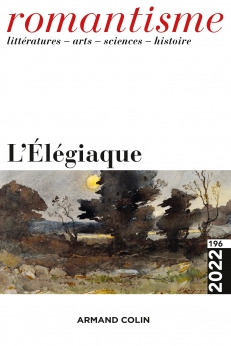
ROMANTISME N°196 (2/2022)
Pour acheter ce numéro, contactez-nous
Recevez les numéros de l'année en cours et accédez à l'intégralité des articles en ligne.
Le romantisme, qui s’intéresse aux pouvoirs créateurs de la voix féminine, imagine volontiers cette dernière à l’origine de l’élégie. La poétesse lyrique Sappho ou une autre poétesse grecque comme Érinna, épigrammatiste et autrice d’un chant funèbre, peuvent être présentées comme premiers poètes élégiaques. Le lyrisme et l’épigramme ou le chant funèbre font-ils l’objet d’une reconfiguration en élégiaque, et, inversement, l’élégiaque se redéfinit-il à leur prisme chez certains Romantiques grâce au passage, senti comme nécessaire à une nouvelle approche du genre, par les voix féminines antiques ? Ou seule la féminité de ces poétesses les intéresse-t-elle ? L’article se propose de suivre ces deux fils en s’interrogeant sur leurs entrecroisements possibles et sur une redéfinition romantique de l’élégiaque issue d’anciennes voix féminines.
Romanticism, which is interested in the creative powers of the feminine voice, is happy to imagine that elegy arises from it. The lyric poetess Sappho or another Greek female poet, Erinna, author of epigrams and a threne or song of mourning, can be seen as elegiac poets. Are lyricism and epigrams or mourning songs the object of a reconfiguration as elegiac and, conversely, is the elegiac redefined through their prism by certain Romantics thanks to a rereading, felt to be necessary in a new approach to the genre, of the feminine voices of Antiquity ? Or are these Romantics interested only in these poets’ femininity ? This paper follows both lines of development by exploring how they intersect and speculating about a Romantic redefinition of the elegiac as originating in ancient feminine voices.

